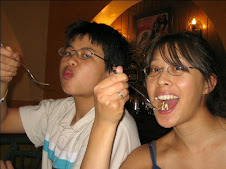Charleston Red Rice

- Total Time
- About 1¼ hours
- Rating
- Notes
- Read 137 community notes
ADVERTISEMENT
INGREDIENTS
- Nonstick cooking spray
- 6bacon slices
- 1medium Vidalia or other sweet, Spanish or yellow onion, chopped
- 2celery ribs, chopped
- 1large green bell pepper, chopped
- 1teaspoon kosher salt, plus more to taste
- 2garlic cloves, minced
- 2cups long-grain or Carolina gold rice, rinsed until water runs clear
- 1(14-ounce) can tomato purée
- 1½cups chicken stock or water, plus more as needed
- 1tablespoon hot sauce
- 1teaspoon Cajun seasoning
- 1teaspoon granulated sugar
- ½teaspoon black pepper
- Pinch of ground cayenne
- Parsley leaves, for garnish
PREPARATION
- Step 1
Heat oven to 350 degrees and coat a 9-by-13-inch baking dish with cooking spray.
- Step 2
In a large (12-inch) heavy skillet over medium heat, fry the bacon until crisp, about 3 minutes per side. Remove the bacon to paper towels to drain, leaving behind drippings. Crumble the bacon and set aside.
- Step 3
In the same skillet, add the chopped onion, celery, bell pepper and 1 teaspoon salt, and sauté until the onion is translucent, about 5 minutes. Add garlic and sauté until fragrant, another 30 seconds.
- Step 4
To the skillet, add the rinsed rice. Stir and toast the rice for 30 seconds. Add the crumbled bacon, tomato purée, stock, hot sauce, Cajun seasoning, sugar, pepper and cayenne.
- Step 5
Bring the rice and vegetables to a boil, then reduce the heat to low and simmer for about 5 minutes. Taste and add salt, if needed.
- Step 6
Carefully transfer ingredients to the greased baking dish. Cover the baking dish tightly with foil, and bake until the rice is tender, about 40 to 50 minutes. Check the rice after about 30 minutes to make sure all the liquid is absorbed, and the rice is tender. (If it's too dry or not cooked all the way through, add a few tablespoons of water or stock at a time, if necessary, and cook a little longer.) Fluff with a fork before serving and garnish with parsley leaves.




